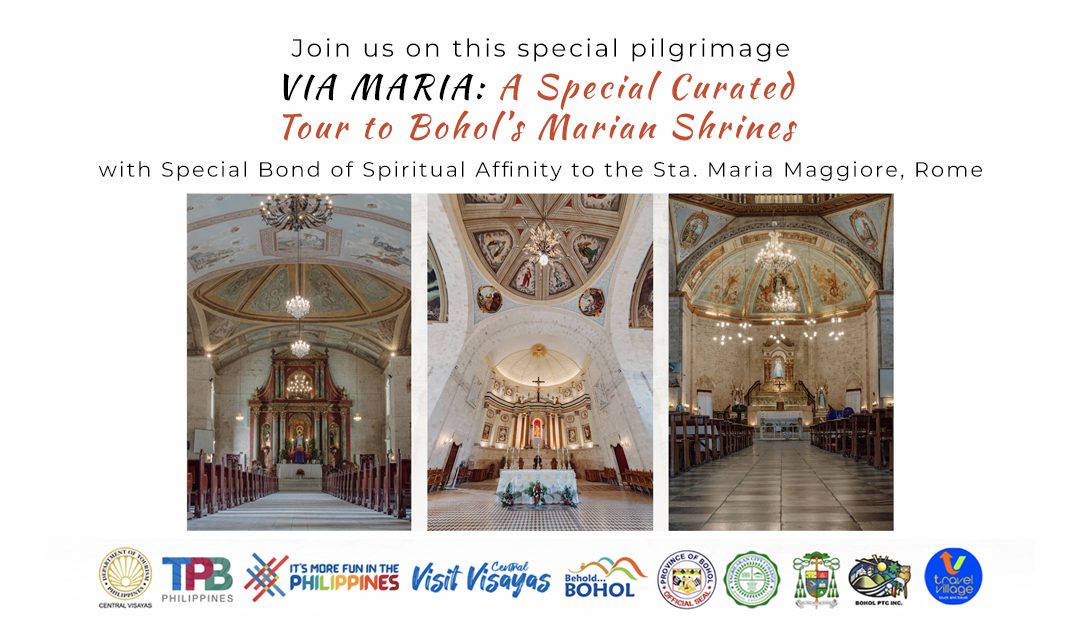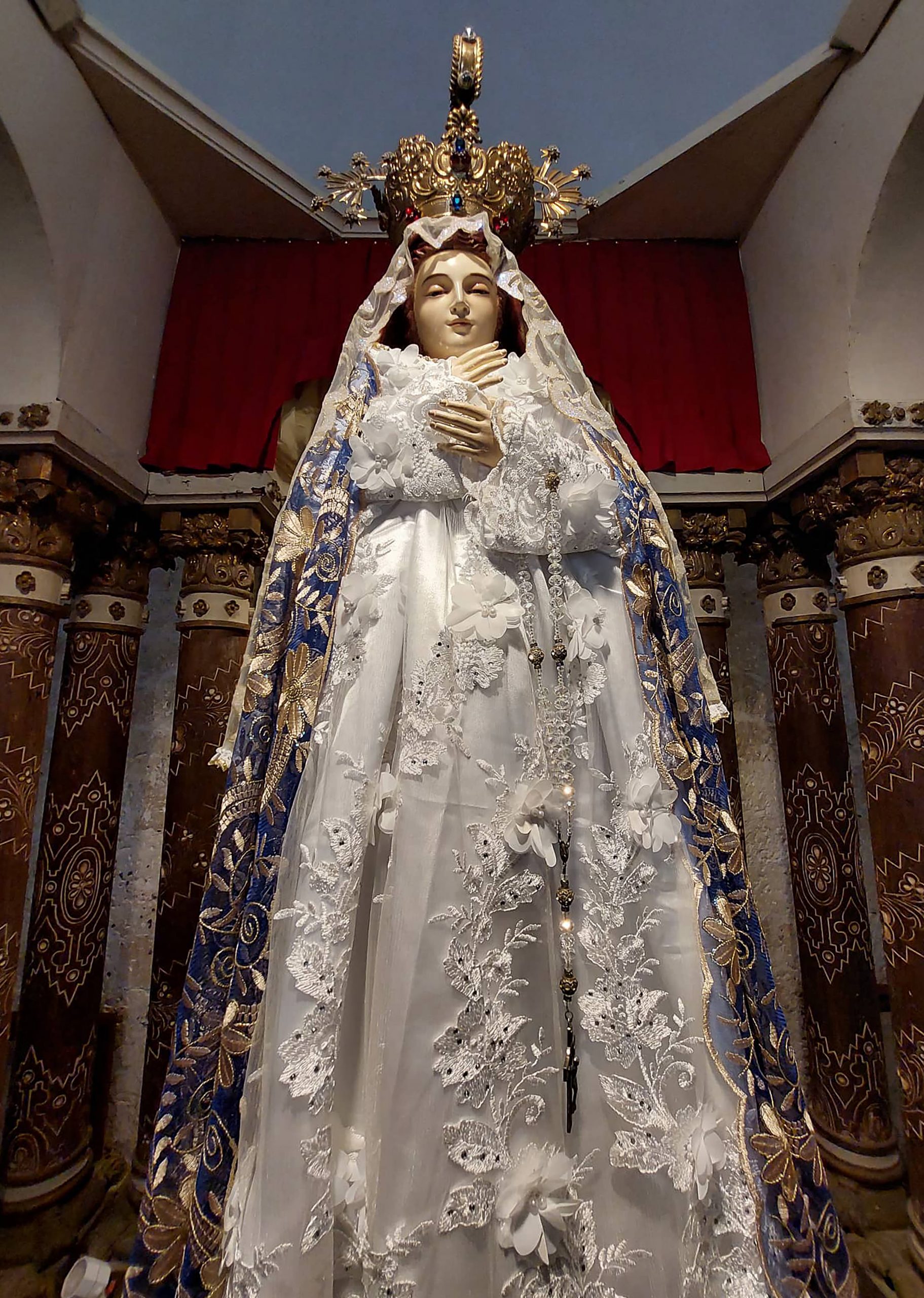
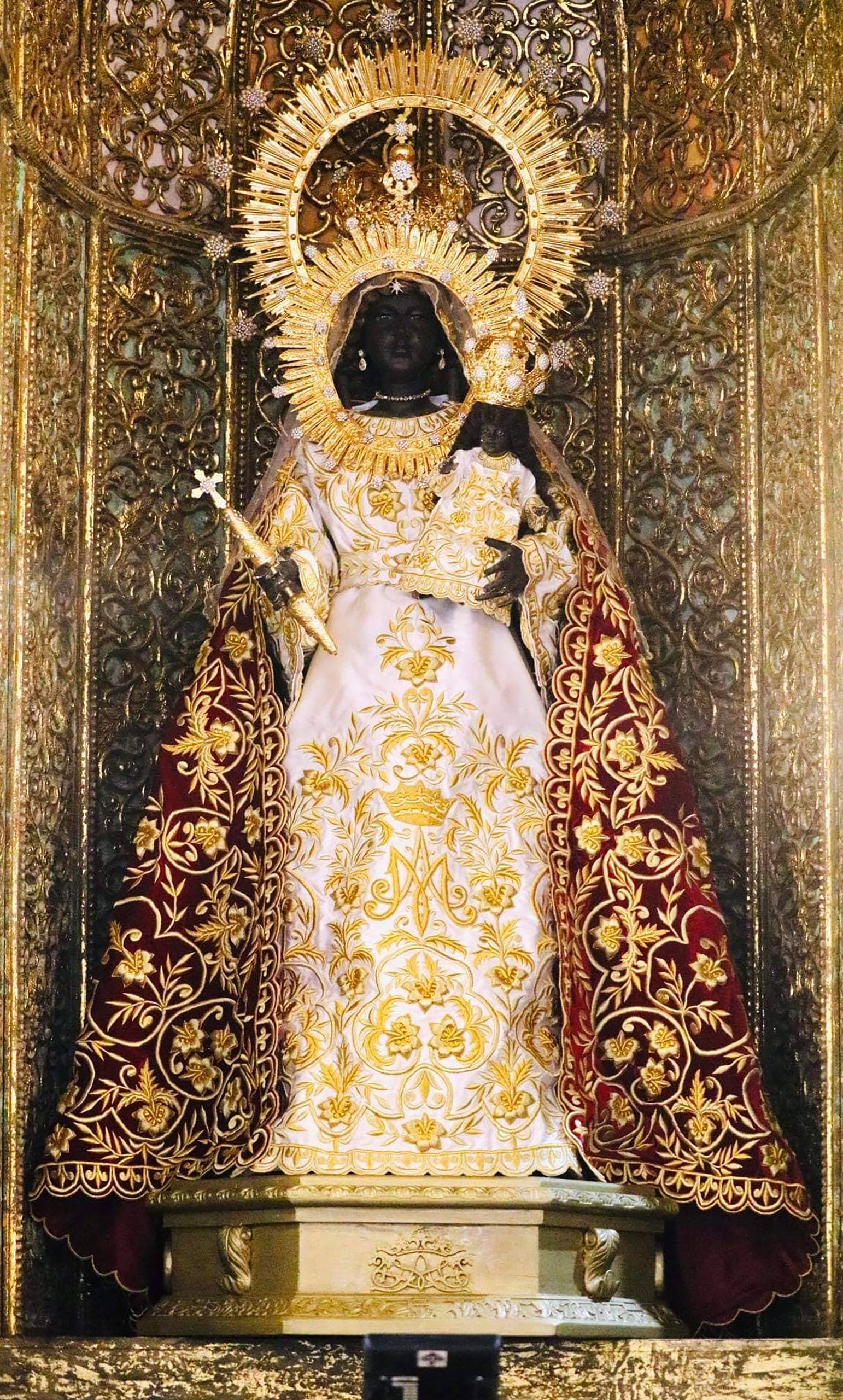
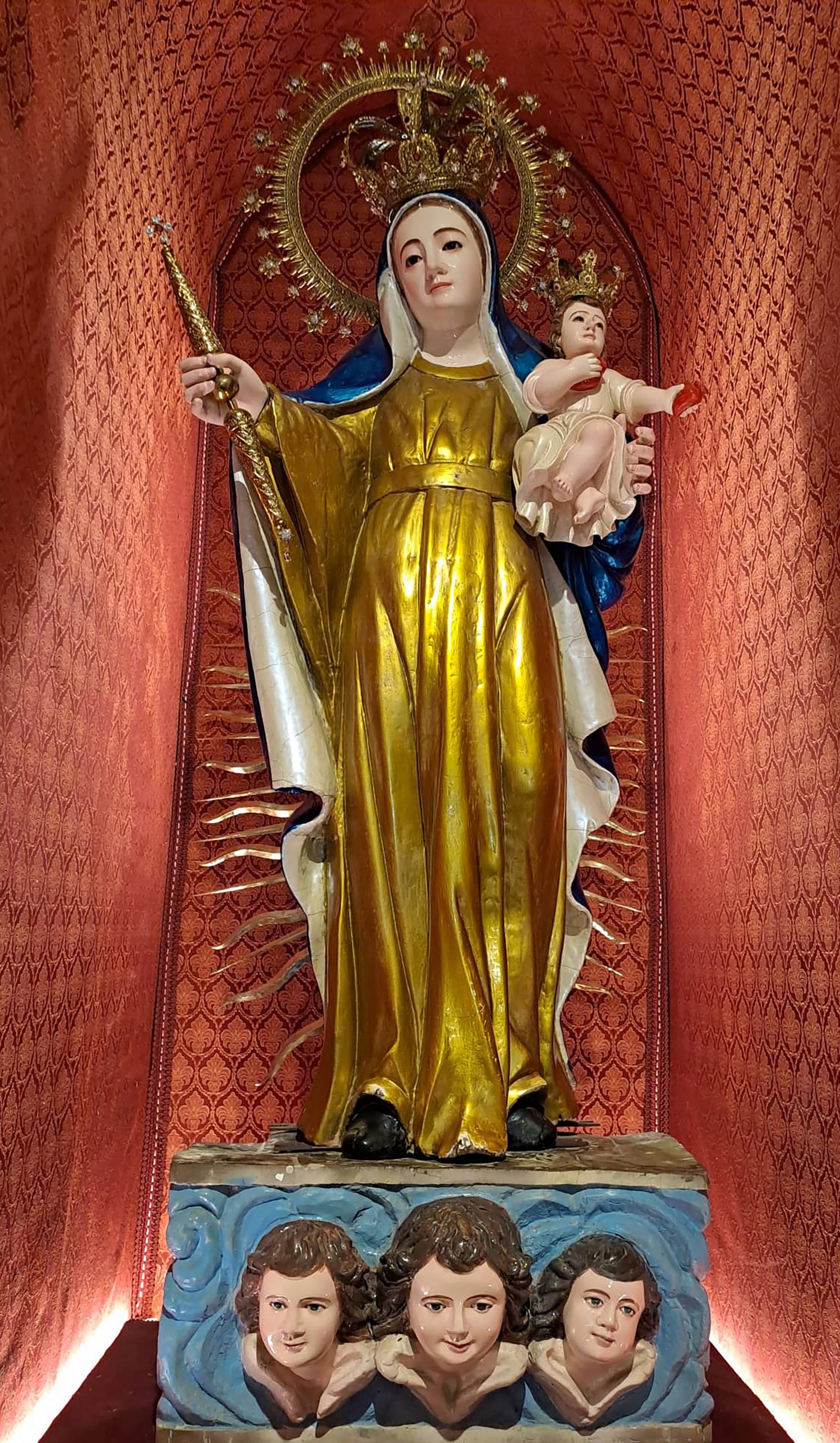
THREE MARIAN SHRINES IN BOHOL
The Basilica of St. Mary Major (Rome) and the Apostolic Penitentiary have established a “Spiritual Bond of Affinity” between the Basilica of Saint Mary Major in Rome and three Shrines of the Blessed Virgin Mary in Bohol. These Shrines are the Diocesan Shrine of Our Lady of Assumption (Dauis); Our Lady of Guadalupe de Extremadura (Loboc); and the Our Lady of Light (Loon). With this bond of spiritual affinity, one can make a pilgrimage in these Shrines and enjoy all the spiritual benefits (plenary indulgences) as if we were able to pray at the Papal Basilica of St. Mary Major, the first known Basilica dedicated to the Blessed Virgin Mary.
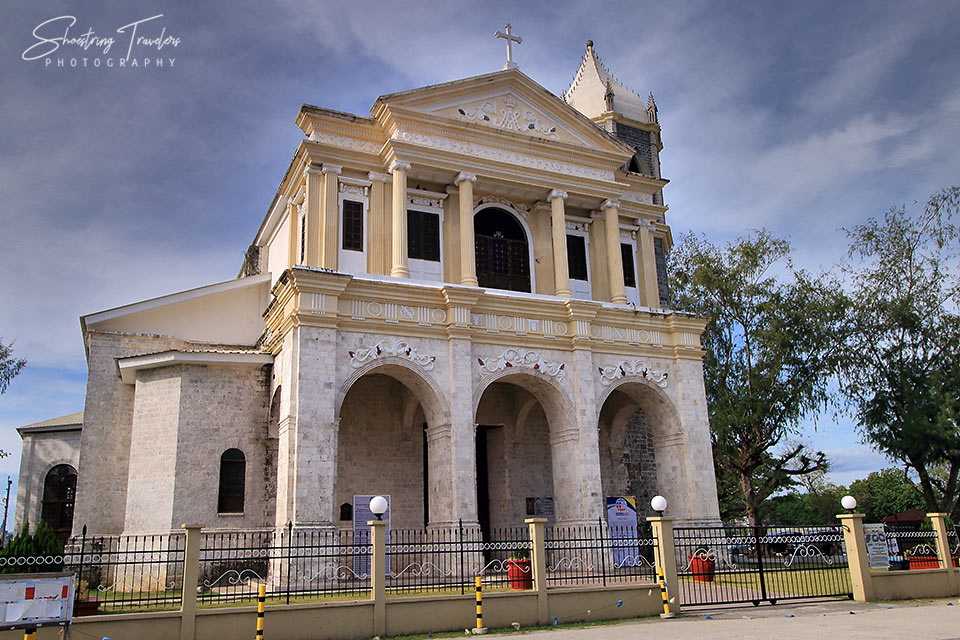
Photo Source: Shoestring Traveler via Blog
Dauis Church was built in 1697 by priests of the Jesuit Order and in 1753, Fr. Joseph Nepomuceno, S.J., built a convent in the church complex which became the official residence of the Jesuits from Loboc.
Fr. Julio Saldana began to construct the present church in 1863 and was later finished by Fr. Natalio del Mar in 1923. In the same year that the construction was completed, the church was inaugurated by Messenger Juan Gorordo of Cebu.
The church’s convent was also used as a shelter in World War II by nuns from Tagbilaran City. In 2004, Dauis Church was designated as the Shrine of Our Lady of the Assumption.
A portion of the church’s front and the portico was damaged when a 7.2 earthquake occurred in the provinces of Bohol and Cebu in 2013. In 2015, the National Historical Commission later restored the church complex before being turned over to the Diocese of Tagbilaran in 2017.
Source: primer.com.ph

The San Pedro Apostol Parish Church (also Saint Peter the Apostle Parish Church, Spanish: Iglesia Parroquial de San Pedro Apóstol), commonly known as Loboc Church, is a Roman Catholic church in the municipality of Loboc, Bohol, Philippines, within the jurisdiction of the Roman Catholic Diocese of Tagbilaran.
After the Jesuits established the Christian community in Baclayon, they moved to Loboc and established a second Christian settlement in Bohol. The parish was established in 1602, and the present coral stone church was completed in 1734. Because of its strategic location, it became the center of the Jesuit mission in the Bohol area. In 1768, upon the expulsion of the Jesuits, the town was transferred to the Augustinian Recollects.
The church is classified as a National Historical Landmark by the National Historical Commission of the Philippines and a National Cultural Treasure by the National Museum of the Philippines.
It was severely damaged when a 7.2 magnitude earthquake struck Bohol and other parts of Central Visayas on October 15, 2013.
Source: philippinesplace.com
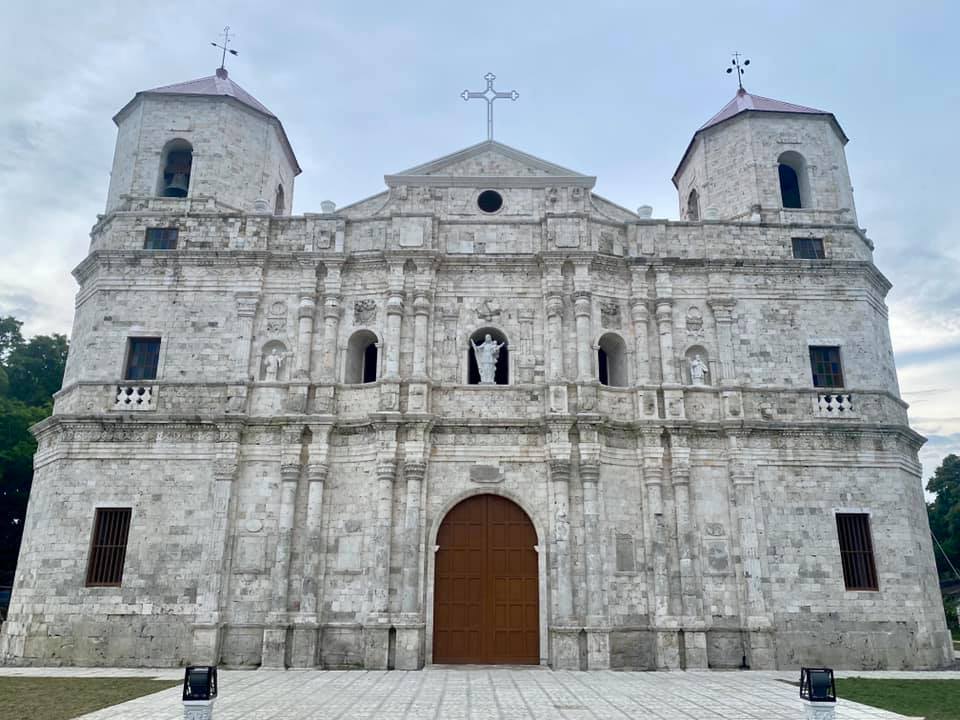
Photo Source: National Museum Bohol
